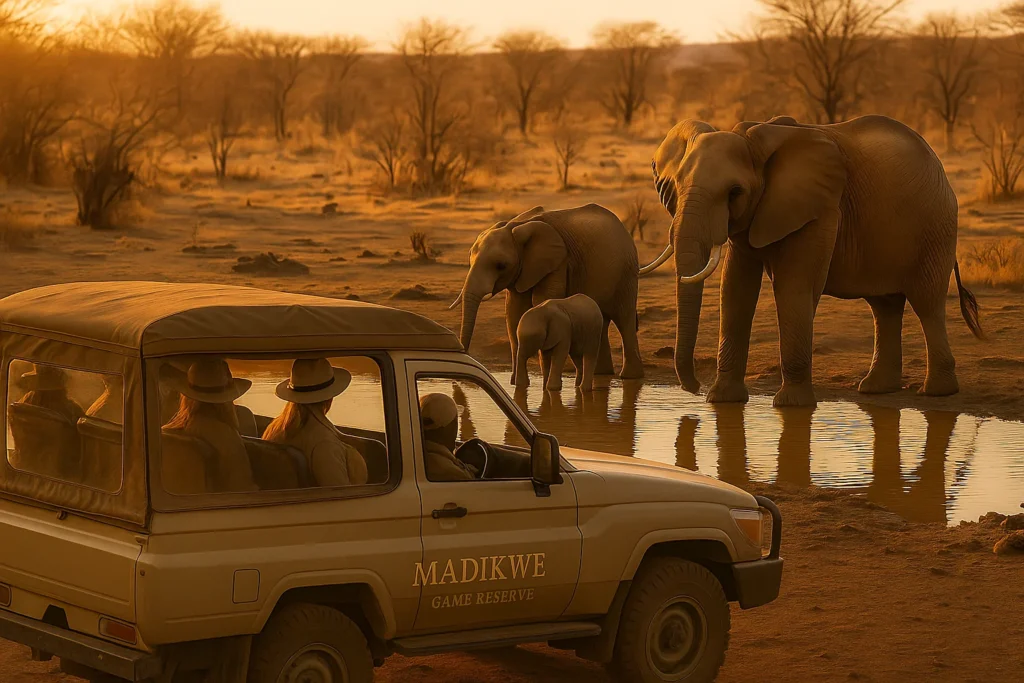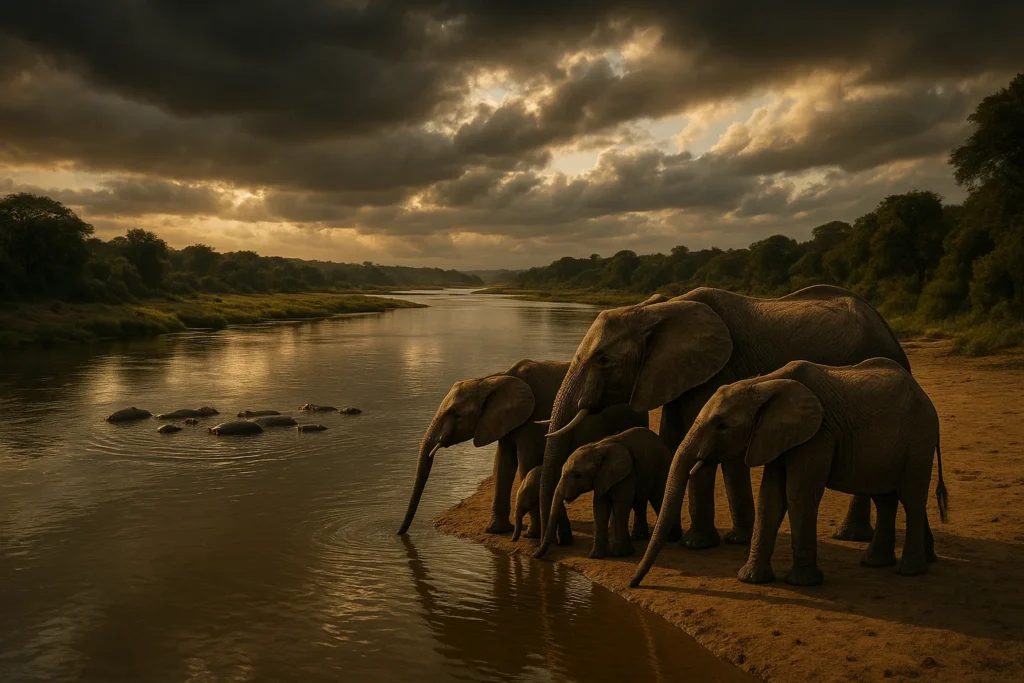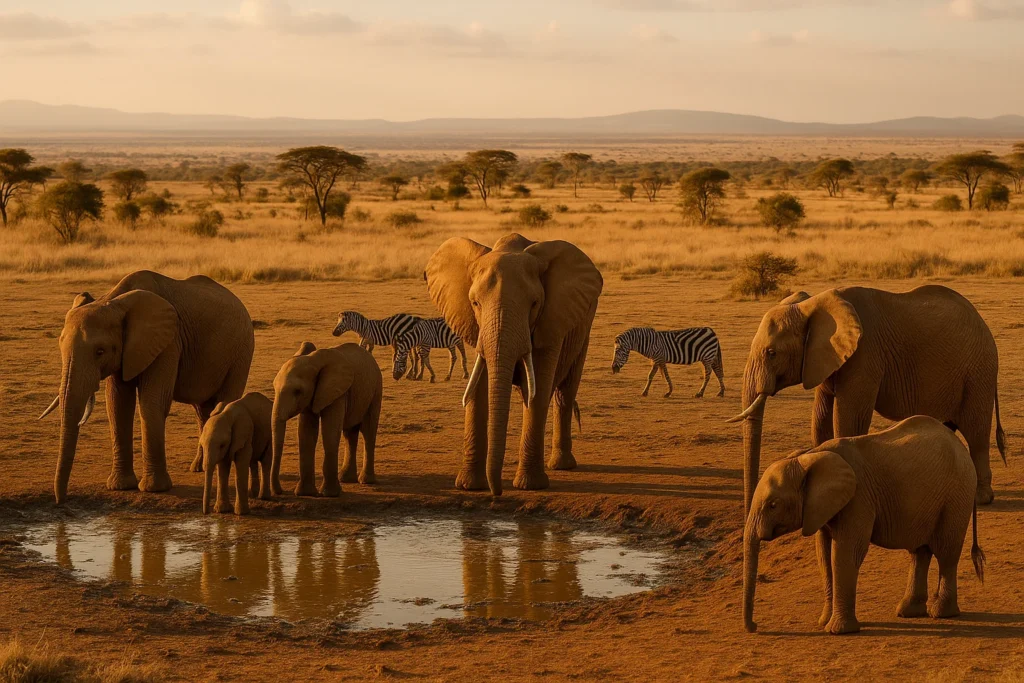The Madikwe Game Reserve in South Africa is a hidden gem for safari lovers, offering exceptional wildlife experiences throughout the year. However, depending on your interests—whether it’s big game spotting, birding, photography, or enjoying lush landscapes—the best time to visit Madikwe varies. This guide breaks it down by season and month to help you plan your ideal safari.
Seasonal overview
Dry season (May to September)
This is the classic safari season in Madikwe. Vegetation becomes sparse, water sources dry up, and wildlife concentrates around remaining waterholes, making animals easier to spot. Daytime temperatures are mild and pleasant, but early mornings and evenings can be quite cold. It’s also the peak season for game viewing, so expect higher lodge rates and more visitors.
Wet season (October to April)
Known as the green season, this period brings lush vegetation, dramatic skies, and a burst of life. Afternoon thunderstorms are common but short-lived. It’s birthing season for many species, and migratory birds arrive in large numbers, making it ideal for birdwatching and photography. While wildlife can be more dispersed, the vibrant scenery offers a different kind of safari charm.
Month-by-month guide
January
- Weather: Hot and humid with frequent afternoon thunderstorms.
- Wildlife: Newborn antelopes, abundant birdlife.
- Experience: Ideal for birders and those who enjoy lush, green landscapes.
February
- Weather: Continued rain and high temperatures.
- Wildlife: Excellent birding, ongoing birthing season.
- Experience: Lower tourist numbers and potential for great photographic conditions.
March
- Weather: Rain begins to taper off; still green and vibrant.
- Wildlife: Young animals are active; birds still abundant.
- Experience: A balanced month with fewer crowds and scenic drives.
April
- Weather: End of the wet season; cooler mornings and evenings.
- Wildlife: Good visibility begins; bush still green.
- Experience: Great for photographers; transitional beauty.
May
- Weather: Start of dry season; cool mornings.
- Wildlife: Animals begin congregating at water sources.
- Experience: Ideal conditions for game drives.
June
- Weather: Dry and cool; chilly mornings.
- Wildlife: Excellent visibility; game easily spotted.
- Experience: Prime safari season with dramatic landscapes.
July
- Weather: Cold mornings, clear skies.
- Wildlife: Exceptional game viewing.
- Experience: Great month for predator sightings.
August
- Weather: Dry and warming up slightly.
- Wildlife: Consistent sightings at waterholes.
- Experience: One of the best months for wildlife concentration.
September
- Weather: End of dry season; warmer temperatures.
- Wildlife: Sparse vegetation aids visibility.
- Experience: Strong wildlife viewing and fewer cold mornings.
October
- Weather: Onset of rains; bush begins to green.
- Wildlife: Mixture of good sightings and fresh vegetation.
- Experience: Shoulder season with good value.
November
- Weather: Increasing rainfall and heat.
- Wildlife: Births begin; migratory birds return.
- Experience: Ideal for a lush, life-filled bush experience.
December
- Weather: Peak of green season; hot with frequent storms.
- Wildlife: Newborns, birds, and vibrant landscapes.
- Experience: Best for nature lovers and fewer crowds.
What this means for your trip
- Best for big game spotting: June to August offers sparse vegetation and concentrated wildlife.
- Best for birdwatching and scenery: November to March brings migratory birds and lush landscapes.
- Best for balanced experience: April, May, and September offer great game viewing with moderate weather and fewer crowds.
- Photography tips: Dry season offers clearer shots; wet season provides dramatic skies and vibrant colours.
- Packing advice: Layered clothing for cold mornings in winter; lightweight, breathable clothes and rain gear for summer.
Conclusion
Whether you’re seeking close encounters with the Big Five or a more tranquil escape among blooming acacias and birdsong, Madikwe Game Reserve delivers unforgettable safari moments all year. Time your visit to match your priorities—be it photography, wildlife spotting, or soaking in Africa’s green beauty—and you’ll leave with stories worth sharing. For more safari insights and destination tips, continue exploring WhySafari.com.
FAQs
Yes, the reserve is open and accessible all year, with different seasonal advantages.
Absolutely. While the rain adds lushness and some challenges, it enhances the beauty and diversity of the experience.
The green season, particularly between November and March, is ideal due to migratory birds and breeding activity.
Early mornings in winter (June to August) can drop to around 0–5°C, so warm layers are essential.
Madikwe is home to the Big Five, African wild dogs, cheetahs, hyenas, antelopes, and over 350 bird species.
No, Madikwe is a malaria-free reserve, making it especially suitable for families and first-time safari travellers.
Often yes—green season or shoulder months tend to have more competitive lodge rates.
Definitely. The colours, lighting, and presence of young animals and birds offer unique opportunities.
Some roads may be muddy, but lodges and guides are well-equipped to manage typical rainy-season conditions.
Shoulder months like April, May, and November are great for fewer tourists without sacrificing quality.






